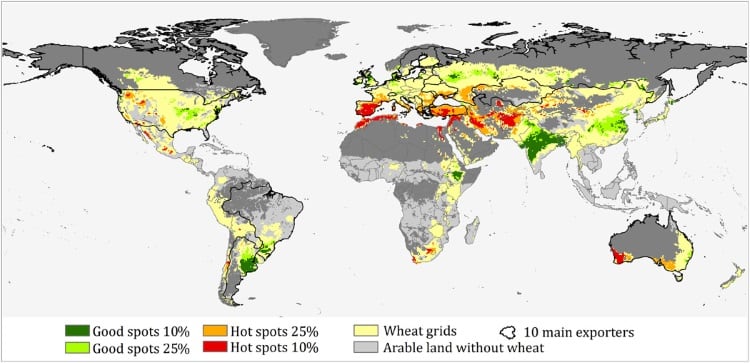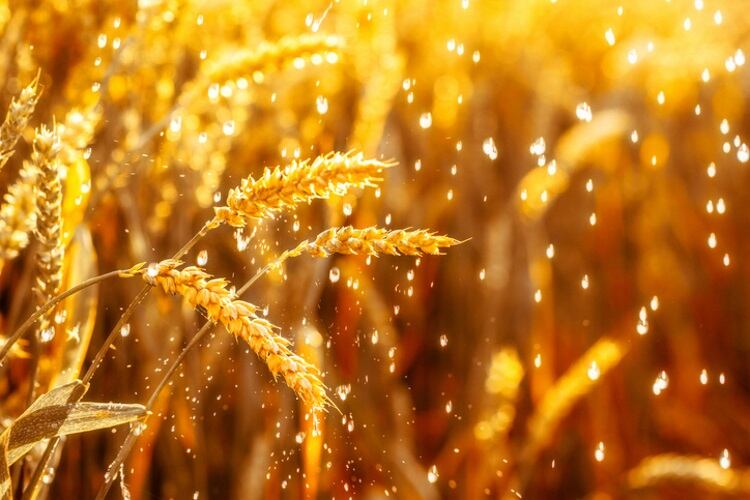In a paper published in Science Advances, they wrote that global warming will increase the frequency and intensity of water shortages, which will cause ‘unprecedented’ shocks to the production of wheat.
Wheat is different from other grain crops as it generally is not irrigated, relying instead on natural rain to grow. The researchers used more than two dozen climate and hydrological models to reach their conclusions.
Their projections show that, if climate change is not mitigated, 60% of current wheat growing areas could face droughts by the end of the century, compared with 15% today.
Even if the world manages to limit warming to 2°C (3.6°F) – prescribed by the Paris Agreement – the negative effects would still double between 2041 and 2070.
Severe water scarcity and the world's wheat-growing areas

They warned that severe water scarcity has implications beyond crop production, including regional conflicts over water use, possible political instability and migration.
Africa – although not a major wheat producer – would be the most affected region, along with by the middle of the century. The world’s top three wheat exporters – the EU, Russia and US – will be severely hit, while farmers in South America may only be ‘marginally’ affected.
Wheat provides protein and nearly a fifth of calories consumed by humans globally, according to the UN’s Food and Agriculture Organization (FAO). It is grown on more land area than any other commercial crop and has a global export value of nearly $50bn.
The FAO has projected a 43% increase in global demand for cereals, including wheat, by 2050, mainly from developing countries.
The researchers concluded that global warming will require economies to find new ways to feed themselves with cultivation migrating to areas with more suitable conditions for growing.
“If only one country or region experiences a drought there is less impact. If multiple regions are, however, affected simultaneously, it can affect global production and food prices, and lead to food insecurity,” they added.
“The results of our study underline the urgent need for concerted global efforts to limit global warming within the targets of the Paris Agreement.”
Study:
Authors: Miroslav Trnka, Song Feng,*, Mikhail A. Semenov, et al
Science Advances 25 Sep 2019: Vol. 5, no. 9, eaau2406



